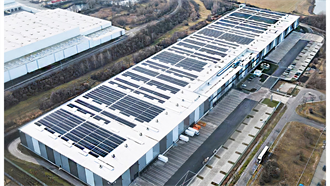Developing successful net zero pathways is about more than financial investment, argues Verco’s Simon Redfern who outlines 10 key steps to tackling the transition challenge.
When considering the investment required to develop an asset-level net zero pathway, it would be tempting to focus entirely on the financials. Having the budget available to develop and consequently implement a pathway is a pre-requisite, but the journey from net zero aspiration to achievement can vary widely between market participants.
Verco’s Simon Redfern describes 10 key steps below to a successful net zero transition.
Financially, there is a temptation to focus on immediate, short-term costs such as net zero pathway development fees and supply chain support costs. This comes from an understandable desire to be seen to be managing costs but it can quickly distract focus away from the larger strategic question of the quality of the pathway developed, how comprehensive the source data used has been and the accuracy and hence value of the outputs. There’s a risk that by focusing on managing the smaller upfront costs we detract from the quality of the tools we use to manage the larger investment costs over time.
One of the key differentiators of successful net zero pathway projects is time investment.
Investment managers should be prepared to invest their time and that of their teams in planning and preparation throughout the pathway development process.
Investing time in pathway development can take on many forms but some key steps to success include:
- Make sure you know what you want to achieve from the net zero pathway and how theoretical you want it to be. If you have broader deadlines to meet, invest time in understanding the context before you instruct.
- Invest time in making sure your audit partner understands your objectives. Clarifying this upfront will save on communications later and minimise the chances of audits not answering all your questions.
- Audit outputs are only as accurate as the data inputs used to create them, make sure you understand what your audit partner needs and provide as much information as you can before the audit.
- Brief your site teams in advance of an audit – auditors will ask a lot of questions about the site, the occupiers, the reliability of plant, the state of repair of the fabric and myriad other factors affecting asset energy and carbon performance.
- A net zero pathway should take account of tenant energy intensity reductions. Your auditor should seek to understand tenant energy use as part of the site visit. Providing tenants with advance notice, an outline of the objectives and timescales of the audit will help start to get tenants on board. (Tenant peer benchmarking, driving greater engagement, everyone loves a league table.)
- The asset management life cycle provides many opportunities to implement net zero measures, ensure you understand when opportunities for interventions are likely and convey this information to the audit team. Internally, prepare the ground ready to take advantage of these intervention points.
- Supply chain partners have a key role to play, brief them on their role, what you need them to do and be mindful of the commercial benefits of these actions to them.
- Ensure the full asset management hierarchy is briefed, aligned and empowered to make net zero happen. Asset managers, property managers, facilities or building managers all need to understand what they’re being asked to do and crucially why, investing time in aligning these parties will make your life easier in the long run.
- Be prepared to challenge previous assumptions and ways of working, for instance, value engineering, service charge administration and end of lease dilapidations all need to be aligned to deliver net zero assets.
- Lead by example, be the person who drives net zero within your professional sphere of influence.
The above list isn’t comprehensive, however successful net zero pathway development and implementation won’t happen without taking these steps.
Perhaps the greatest challenge for asset managers is the question of tenant net zero transition. Nine of the items on the above list fall directly into the asset manager’s sphere of control or sphere of influence, the behaviour of tenants is on the periphery of the asset manager’s influence. In our experience significant energy reductions in tenant areas can be achieved through proactive programmes focusing on collaboration and knowledge sharing. The ideas laid out above aim to ensure everyone involved in the management and operation of an asset understands how their actions, objectives and day-to-day decision-making connect back to and support the delivery of the organisation’s high-level goals.
We are here to help with the challenge and have created a toolkit for asset managers:
- Free online reporting assessment to help you identify your reporting requirements
- Net zero portfolio webinar to define your net zero framework at a portfolio level
- Net zero pathway ebook to achieve net zero for your buildings
- NABERS UK Ratings webinar so that you can verify performance with a standardised rating
Take a look at our toolkit for asset managers to achieve net zero here



































